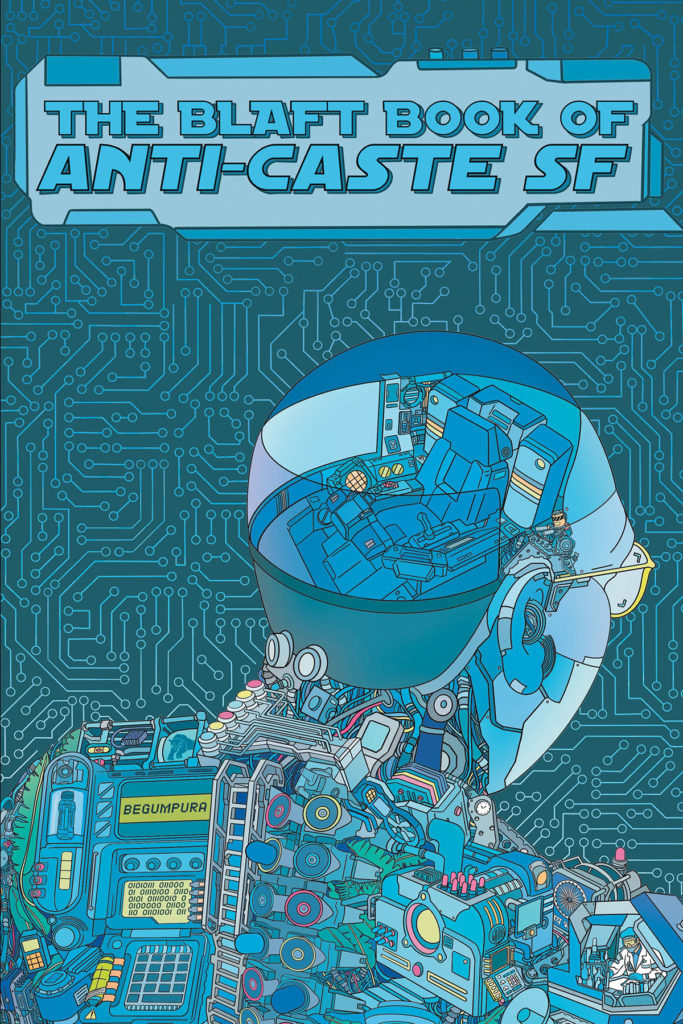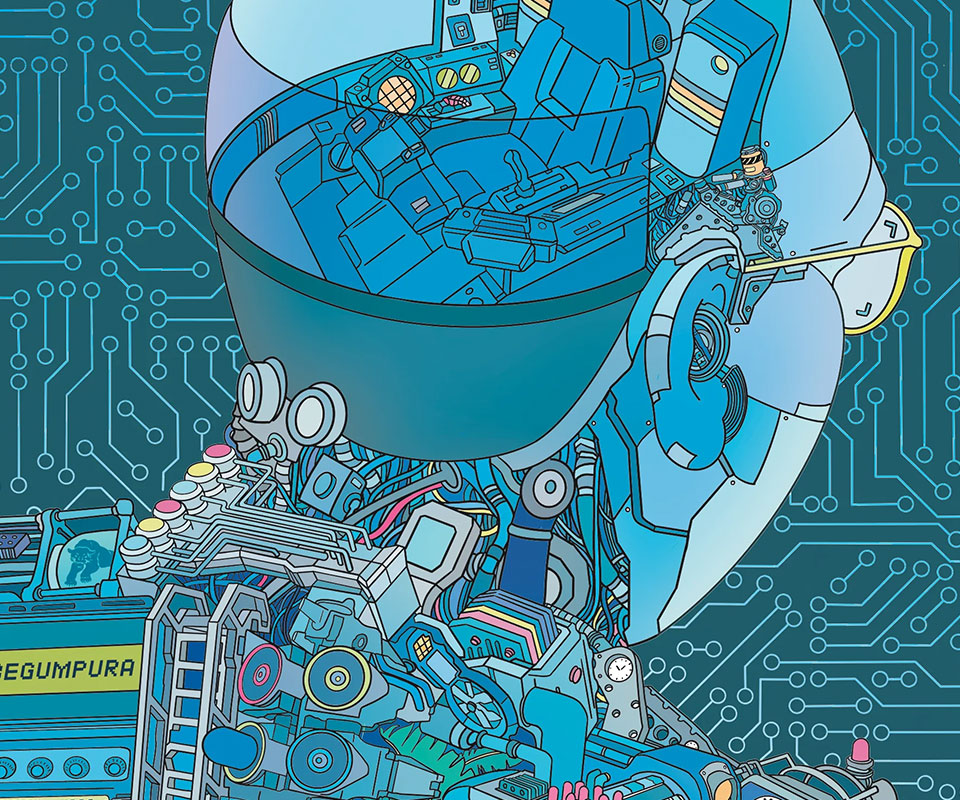Published in December 2024, The Blaft Book of Anti-Caste SF is an anthology of speculative fiction that sees both established and emerging Dalit Bahujan writers explore the possibilities and impossibilities of their lives. It is a book that rewards readers with a genre-bending mix of fantastical, futuristic, and magical-realist fiction that explores the physical and psychological consequences of the caste system in India.

The stories in this book do not hesitate to confront various societal practices in the country that are accepted as the norm, often at an almost subconscious level. Take cleanliness, for example. While there is a distinct lack of responsible waste-management on an individual and collective level, the burden of keeping a public space clean invariably falls onto lower-caste groups, who are also marred by the labels of ‘unclean’ and ‘impure’. And more often than not, this burden is shouldered by women. Spacewali by Sumit Kumar is a graphic narrative in which a domestic worker is sent to space to help the male astronauts keep their spacecraft clean. In one scene, while she is cleaning up after them, a couple of astronauts (one upper-caste and the other lower-caste) are debating the reservation system. It’s easy to see the characters’ frustration with the system and the disconnect between their lived realities.
The House is Never Clean by Shivani Kshirsagar opens with a mysterious advertisement for a housekeeper on Reddit. A user named ‘princesspamila’ (our protagonist) responds to it out of curiosity and posts her experience online. She agrees to a trial period, and what follows is a strange sequence of events in a household filled with bizarre people that almost seem like aliens. Although princesspamila leaves the job, she develops a paranoia about her surroundings never being clean enough, stating, “I have been sick and cleaning my house non-stop. The slightest sight of dirt makes me rabid. I feel like I am rotting on the inside, like I can feel a sickness develop.”
The anthology also considers how layers of gender and sexuality can further isolate people and curtail movement and expression within already oppressed caste groups. For instance, in the story A Demon that Sits on Your Chest by Gouri, the protagonist Anjali is being haunted by a Pey (Tamil for Demon). The Pey follows her through every aspect of her life—her education, job, love life, and more. Her mother tells her she deserves the pain the Pey brings, because she is a “crazy homosexual”. Melonhead by Nabi H. Ali is a story about a clash between humans and djinns. It features a protagonist with a crush on a trans girl named Nirmala, with both girls being forced to keep their identities a secret. However, the djinn in the story is more than happy to accept Nirmala for who she is. Happily Ever After by Archita Mitra shows two female toymakers who face communal violence because of their love for each other.
The book features an interesting mix of graphic and written narratives (including poetry) to keep readers hooked, and reading the physical copy of the anthology is truly a wonderful experience for readers. Yangdang Phongma by Subash Thebe Limbu is a series of images and text from his film Ningwasum (2021). Margin Mag by Sudarshan Devadoss and M. K. Abhilash is a mini-magazine that I wish I could go out and buy. Every story is distinct and unique and I never quite knew what to expect from one to the next.
“The genre of speculative fiction grants the writers an open playing field, allowing them to traverse beyond traditional narrative techniques, question blind beliefs, and amplify the horrors of our realities.”
File No. 786 [The Night Journey] by Hameedha Khan, set in a futuristic era in the Western Ghats, is one of my favourite stories in the anthology, and I enjoyed reading about the protagonist, Rafis Nahim, embarking on a mission to survey Zone H and investigate the mysterious appearance of a member of the Bovidae family. It is a story that explores the significance of nature in our everyday lives and its fundamental role in keeping our societies functional. Pruning Neurons by Esther Larisa David is another favourite, featuring a Khasi protagonist who returns to her hometown to work for an AI company, only to unwittingly become part of an obsolete ritual sacrifice.
The genre of speculative fiction grants the writers an open playing field, allowing them to traverse beyond traditional narrative techniques, question blind beliefs, and amplify the horrors of our realities. Each story grapples with the weight of traditional, age-old systems and how they continue to harm every member of society. While some stories end on a hopeful note, others reflect a deep despair over current realities. Across the anthology, the caste system is frequently depicted through the imagery of monsters and demons. A few stories even imagine this legacy being carried into space and passed on to alien civilisations. Stories like The Phantom Ladder by Gogu Shyamala and Death of a Giant in a Godless Country by Snehashish Das delve into the mental gymnastics required to justify such a system in the first place.
Books often serve as mirrors to society. Drawing from the past and imagining the future, this anthology asks urgent questions: Why does the caste system still endure? And what sustains it? Several of its stories may leave readers feeling disappointed or angry, inviting introspection about their own place within the system and the ways in which they uphold it. The Blaft Book of Anti-Caste SF is an expertly curated collection of voices, themes, protagonists, and perspectives. Buoyed by the Ambedkarite spirit and principles, it illustrates how our system and the lived experiences of Dalit Bahujan communities have remained largely unchanged over time, and imagines what could be.







